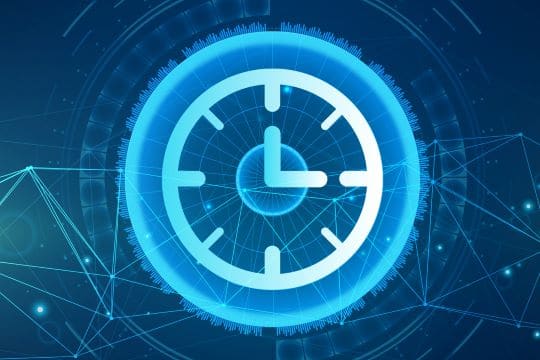
Guide to Master Clocks for Precision Time & Frequency Systems
What is a Master Clock?
 Master Clocks take one or more precise timing reference signals as inputs, then convert and distribute those timing references to other devices to improve their accuracy.
Master Clocks take one or more precise timing reference signals as inputs, then convert and distribute those timing references to other devices to improve their accuracy.
Master clock systems are used in a variety of applications and industries, including:
- Aerospace
- Defense
- Broadcast
- Radio
- Telecom
- Network systems
- Financial services
- Emergency operations
- Call centers
- Healthcare
- Anywhere that reliability of data and signals is critical
Network master clocks distribute their timing references over local or wide area networks. There are also highly accurate master clock solutions that utilize copper or fiber connections for signal distribution of precise analog and digital signals, such as IRIG, HAVEQUICK and ASCII timecodes.
Master clocks can differ in the source of their timing reference. It is rare for a master clock not to be synchronized to a continuous external reference. So, a core feature of all master clock systems is that they must accept precise timing reference signals as inputs.
Safran’s SecureSync modular time and frequency synchronization system can accept over 14 different signal types to discipline its local clock, which can generate a similar number of signal types to synchronize other devices. If an external reference is lost, SecureSync will automatically switch to a remaining available reference. If no other references are available, the local clock maintains timing accuracy until the reference(s) can be restored. Safran offers several local clock oscillator options, depending on the accuracy required during the “holdover” period.
Common Uses of Master Clocks
Safran master clocks deliver precise signaling and Legally Traceable Time™ to all timekeeping functions in any network.
- Safran master clocks are used to record emergency calls to improve response times and to settle legal disputes
- Digital broadcast systems rely on master clocks to align frequency and time to ensure the reliability of wireless transmissions
- Military C4ISR platforms (radar, satcom, simulation, electronic warfare) require master clock precision for accurate timing.
- Telemetry and flight test systems need to correlate sensor and other data with precisely synchronized time
- Commercial enterprises, data centers and financial services leverage NTP Servers for records accuracy, troubleshooting and security, as well as to enable time-sensitive applications to operate at extremely accurate levels.
Rack Mount Instruments, Display Clocks, Plug-in Cards, OEM Boards & Modules, and Mobile Master Clocks
Safran also offers synchronized rack mount appliances, plug-in computer/server slot cards, OEM boards, and rugged modules that can be used as master clocks for many applications. In addition, Safran offers VersaSync, a rugged timing platform with a small size, weight and power (SWaP) master clock, as well as VersaPNT, a single compact unit for high dynamic vehicle applications that includes an inertial measurement unit (IMU).


